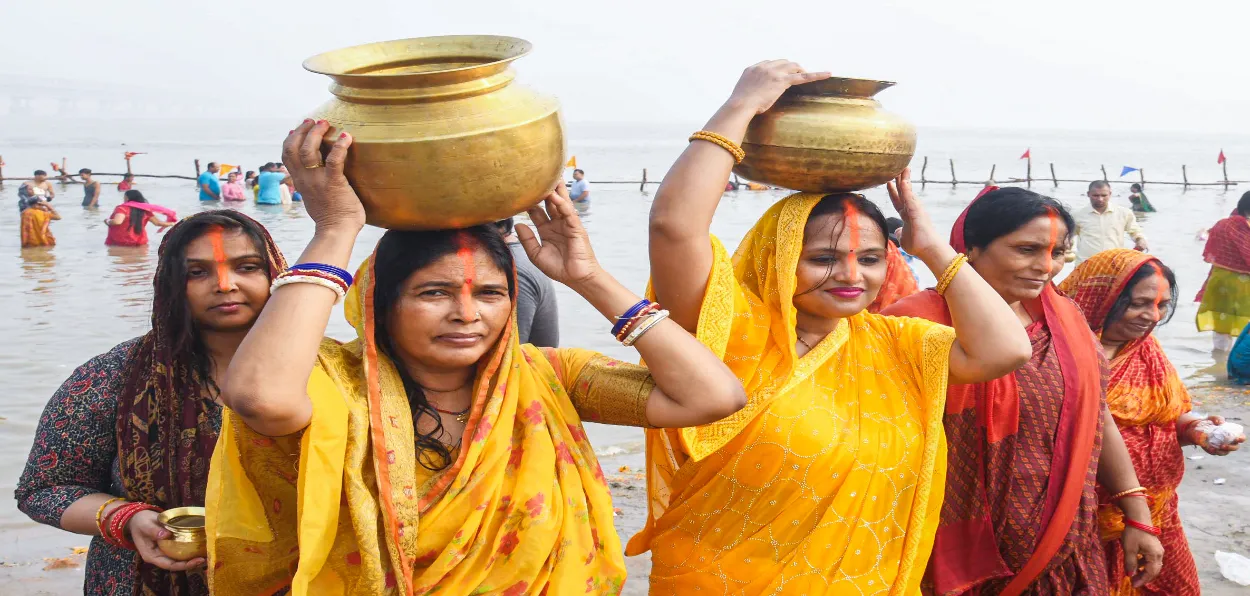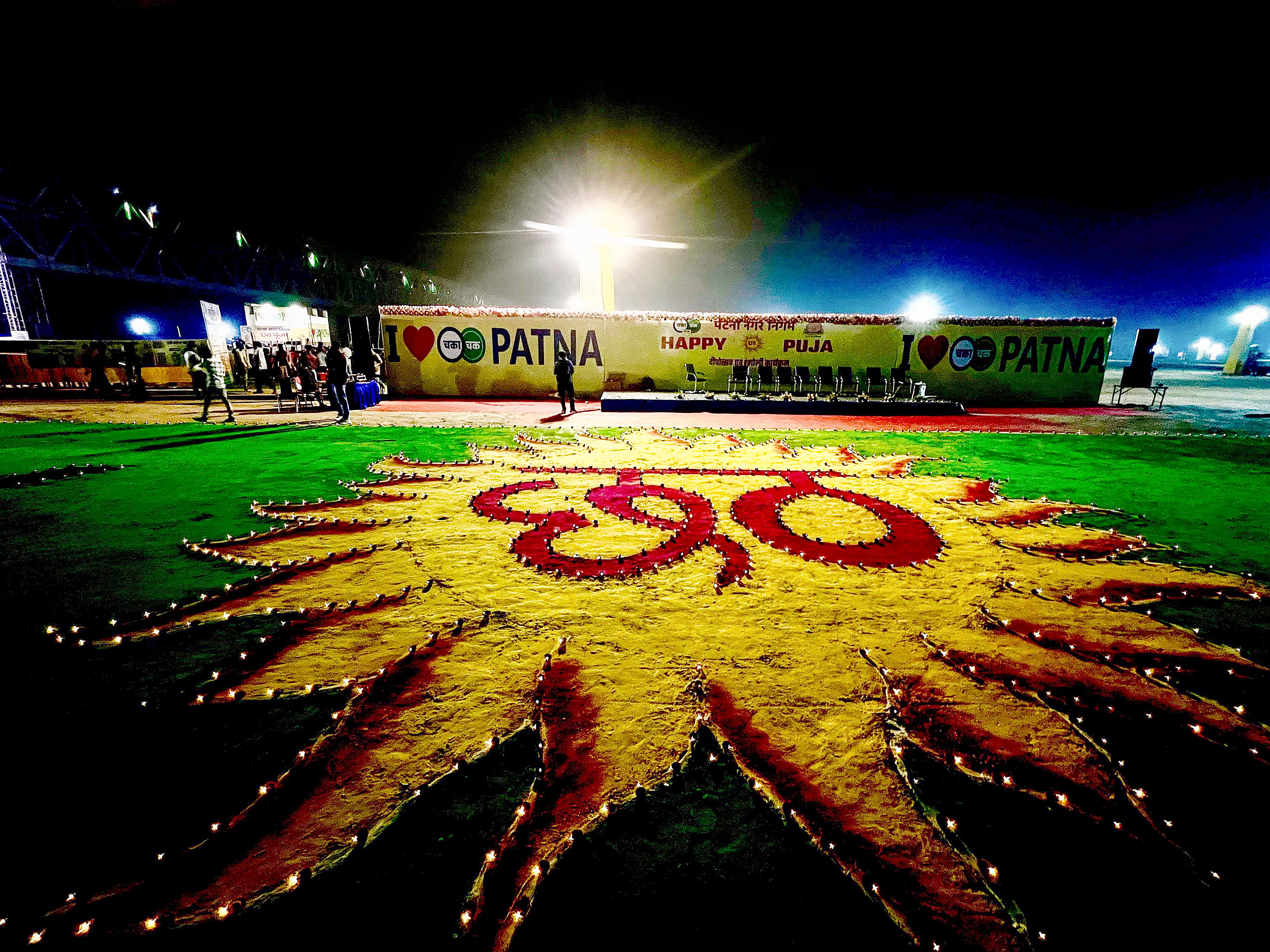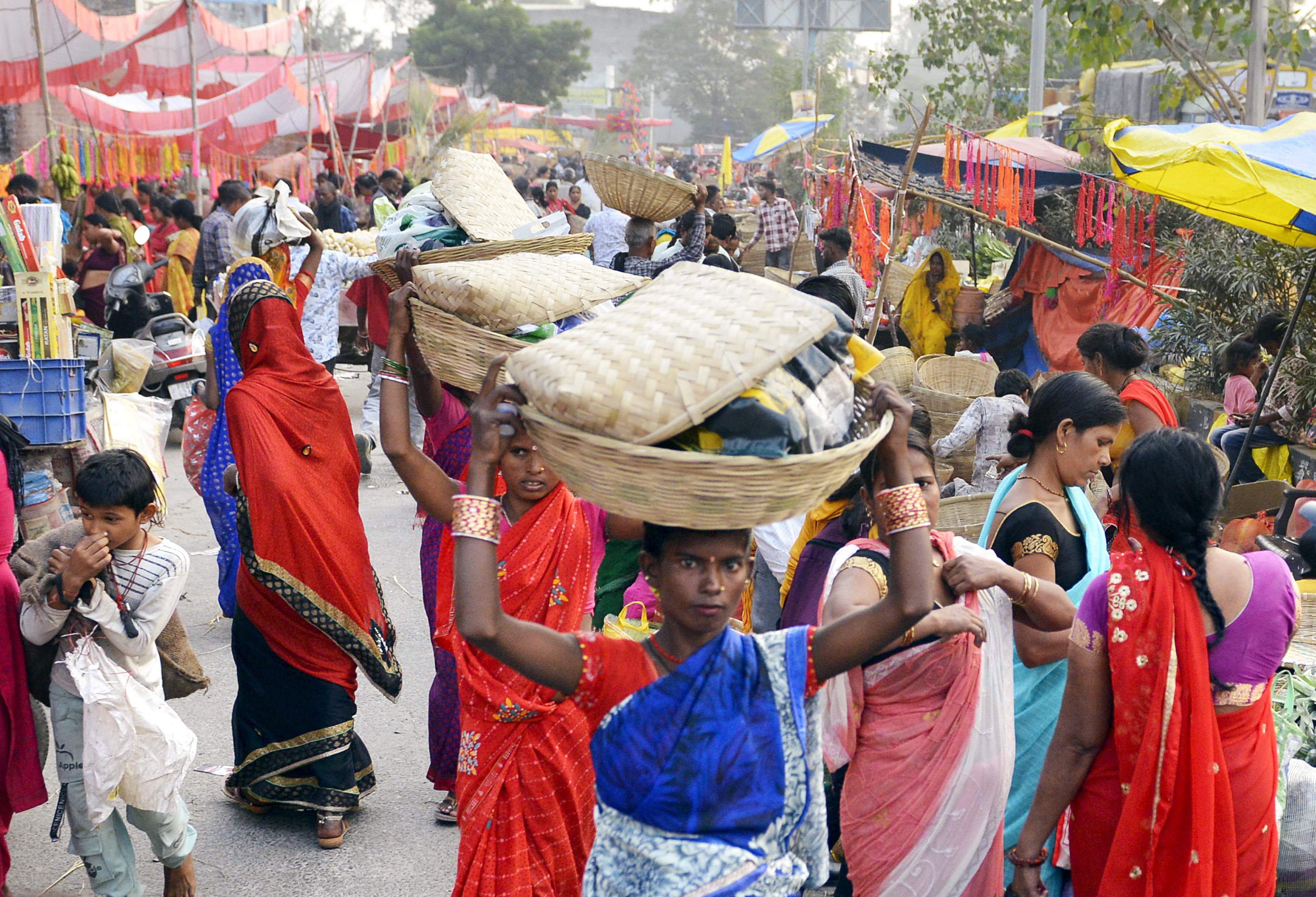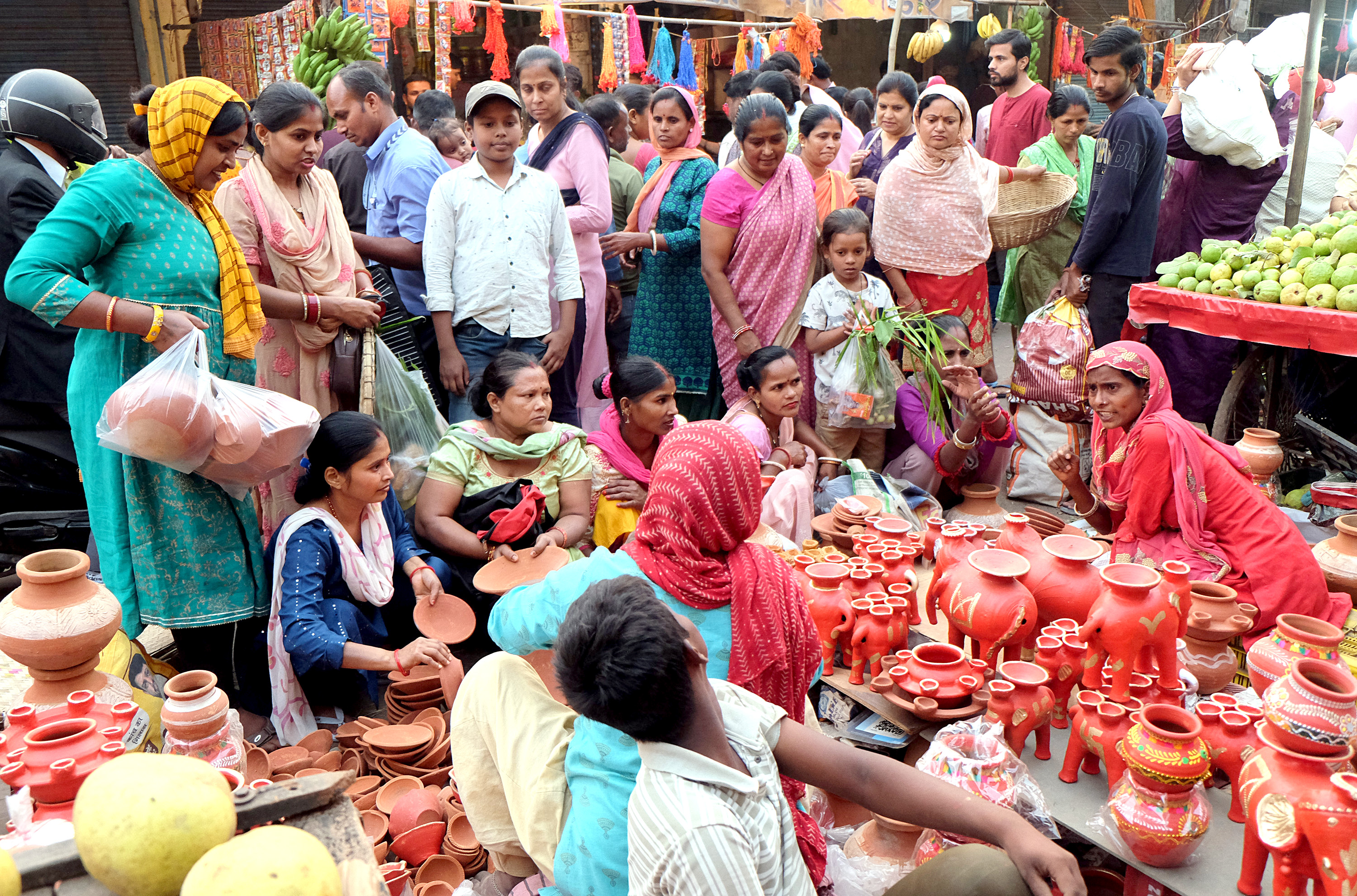
Manjit Thakur
Why is Chhath celebrated only in Bihar, Jharkhand, Purvanchal, and adjoining regions? What is the origin of this festival in which people pray to the Sun God? There are a few questions that pop up in the minds of many people.
To begin with, an interesting fact about the Chhath festival is that it also encompasses a unique worship of the Sun as it sets, -as against the powerful image of the rising sun -symbolizing submission to all creation. The practice is also a metaphor for accepting and honouring someone who is not progressing or rising in life and is not a rising sun.
The Chhath Puja needs no intermediary between the devotee and the Sun God and thereby makes the priest - usually an upper caste Hindu – follow rituals of prayers and thus becomes a common festival. The offerings, fruit, vegetable shoop (a wicker tray used for cleaning pounded paddy) and other products are all locally sourced. Thus the festival has pre-civilizational origins. Perhaps that is why people of all castes and classes participate in it with equal devotion.
 Patna Municipal Corporation decorates the Ghat of Ganga on the festival
Patna Municipal Corporation decorates the Ghat of Ganga on the festival
The eastern part of India, including my land Mithila, has a series of unique festivals Judha-Sheetal, Holi, and Baisakhi, that have roots in the local agrarian calendar. Such festivals were later linked to Vedic literature. Many people also link Chhath to mythological stories. However, the absence of ritualistic worship proves that Chhath is not a festival of classical tradition. It’s a festival born from the people's minds and is seeped in emotions.
According to Sushant Jha, editor of Penguin Hindi and social analyst, “Chhath is also related to Shakaldvipi Brahmins. Shakaldvipi Brahmins live in the Magadh and Bhojpur areas of Bihar and eastern Uttar Pradesh. Shakaldvipi or Shakadvipi Brahmins were those who lived on Shak Island which is today’s Iran. It is said that in the distant past, these people had gone to Shak Island from Magadh and that is why they were also called Mag. In Latin texts, a caste of ancient residents of Iran has also been called Magis and they were worshippers of the Sun.
The Parsis of Iranian origin are also worshippers of the Sun. The Kulgeet of Shakaldeepi Brahmins is called Magopakhyan. However, the question is how did Shakaldeepi Brahmins reach Bihar from Iran?
 Women carrying offerings in bamboo baskets for praying to the Sun God
Women carrying offerings in bamboo baskets for praying to the Sun God
Sushant narrates an anecdote that when Krishna's son Samba was suffering from leprosy, the physicians advised him to perform a yagya to worship the Sun. Due to the myths associated with leprosy, the local Brahmins refused to perform the yagnya, so Krishna invited the Brahmins of Shak Island to Dwarka who were worshippers of the Sun. This seems to be correct geographically as well. It is said that they cured Samba's disease with their tricks and settled in Dwarka, Gujarat.
Later, when Dwaraka fell and got submerged in the sea, these Shak-Dwipi Brahmins settled in the areas of Magadha which was rising again after the Mahabharata period. Due to them, a series of Surya temples were built south of the Ganges and their priests were Shakaldeepis.
Sushant Jha says, “Probably Suryaopasana and Chhath Puja started from that time. Interestingly, there is another catch here: while Suryaopasana started by Brahmin priests must have had Vedic mantras and rituals Chhath Puja does not have it! Also, Bharuch, Gujarat, (earlier called Bhrigukachchha)located on the banks of Narmada had a big center of worship of Surya and his wife Usha.”
Later, Gurjar emperor Jaibhatt II also established a huge Sun temple there. Gurjar kings worshipped the Sun. Thus Sun worship became popular there due to Shakaldeepi Brahmins settling in Gujarat, who later moved to Magadha. Some recent research suggests that there was a chain of Sun temples in Mithila, north of the Ganga. This chain probably reached Konark in Odisha, south of the Ganga.
 Roadside vendor selling wares for the Chhath festival in Patna
Roadside vendor selling wares for the Chhath festival in Patna
The Dev of Aurangabad, Pundarak (ancient name Punyark) of Patna, and the Sun Temples found in many places in Jharkhand indicate this. It is true that Chhath Puja is not celebrated only in Magadha, but is also celebrated with the same devotion in Mithila. The question is when did the Sun worship begin in Mithila? The question is also how much similarity and difference is there between the Sun worship as per rituals and the worship of the river and the Sun celebrated as Chhath as per folk customs?
ALSO READ: Chhath Puja: Cultures around world venerate Sun God
Does the dense population of Yadavs in that area have any connection with that mythological event? Could this be the reason for some similarity between Maithili and Gujarati, the languages of that area? Could the thread of some similarity between Maithili, Bengali, Nepali, and Gujarati be rooted in that mythological event? This is a subject of deep research. Although the present batch of historians rejects folk tales and folk songs as evidence, scholars should work in this direction as well.
(The references to Surya Upasana in this article are based on a conversation with Penguin Hindi editor, writer and social analyst Sushant Jha)
